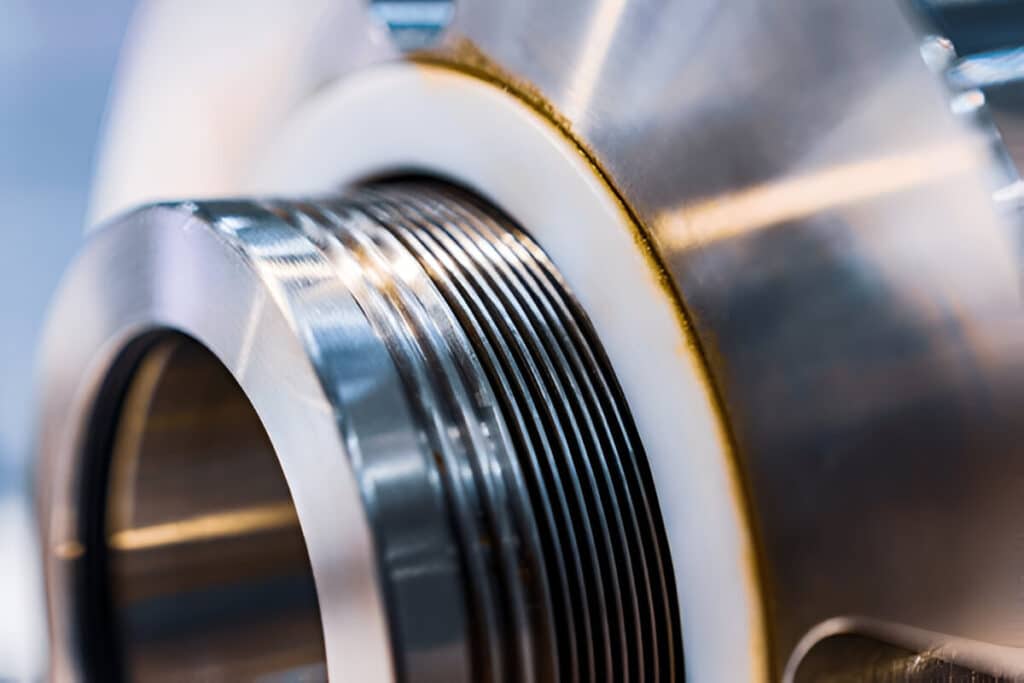Seals are critical components in machinery that prevent fluid leakage and contamination. Labyrinth seals and lip seals are two distinct types of seals commonly used in various industrial applications, each with its own unique design and operating principles.
In this blog post, we will delve into the key differences between labyrinth seals and lip seals, exploring their structures and suitable applications.

What Is Labyrinth Seal
Labyrinth seals are non-contact seals that provide an effective sealing solution for a wide range of industrial applications. These seals consist of a series of intricate, maze-like grooves or passages that create a tortuous path for fluids or gases, making it difficult for them to escape. The complex design of labyrinth seals allows them to operate efficiently under various conditions, including high speeds, extreme temperatures, and different pressure ranges.
One of the key advantages of labyrinth seals is their ability to function without direct contact between the sealing surfaces. This non-contact design minimizes friction and wear, extending the seal’s service life and reducing maintenance requirements.
Labyrinth seals find extensive use in high-speed rotating equipment, such as turbines, compressors, and pumps. They are particularly effective in preventing the leakage of gases, lubricants, and other fluids while also protecting the internal components from the ingress of contaminants. The seals’ ability to withstand a wide range of temperatures and pressures makes them suitable for demanding industrial environments, including those involving harsh chemicals or extreme operating conditions.
What Is Lip Seal
Lip seals, also known as radial shaft seals or rotary shaft seals, are a common type of mechanical seal used to prevent the leakage of fluids and the ingress of contaminants in various industrial applications. These seals consist of a flexible sealing element, typically made of rubber or other elastomeric materials, that is mounted on a metal outer casing. The sealing lip is designed to maintain constant contact with the rotating shaft, creating a tight seal that prevents fluid leakage and the entry of dirt, dust, or other contaminants.
The effectiveness of lip seals relies on the lip’s ability to maintain a stable lubricating film between the seal and the shaft surface. This film helps to reduce friction, minimize wear, and ensure efficient sealing performance.
Lip seals are widely used in various industries, including automotive, industrial machinery, and agricultural equipment. They play a pivotal role in sealing rotating shafts in applications such as engine crankshafts, transmission systems, gearboxes, and hydraulic cylinders.

Key Differences Between Labyrinth Seals and Lip Seals
Design
Labyrinth seals and lip seals differ significantly in their design and construction. Labyrinth seals feature an intricate design with a series of grooves or channels that create a tortuous path for fluids or gases, effectively reducing leakage. These non-contact seals do not rely on direct physical contact with the rotating shaft, minimizing friction and wear.
In contrast, radial lip seals, also known as shaft seals or oil seals, are a type of mechanical seal that consists of a flexible lip, typically made from elastomeric materials such as rubber or PTFE. The lip maintains direct contact with the rotating shaft, creating a tight seal that prevents the leakage of fluids and the ingress of contaminants.
Sealing Efficiency
The sealing efficiency of labyrinth seals and lip seals varies based on their design and operating conditions. Labyrinth seals provide effective sealing by creating a series of pressure drops along the seal path, reducing fluid leakage. While they do not offer a complete seal, labyrinth seals are highly efficient in high-speed applications and can handle a wide range of temperatures and pressures.
Lip seals, on the other hand, provide a high degree of sealing efficiency due to the direct contact between the lip and the shaft surface. They are well-suited for preventing the leakage of lubricants, oils, and other fluids in various industrial applications. However, the sealing performance of lip seals can be affected by factors such as shaft misalignment, surface finish, and the presence of abrasive particles.
Applications
The choice between labyrinth seals and lip seals depends on the specific application requirements and operating conditions. Labyrinth seals are commonly used in high-speed rotating equipment, such as turbines, compressors, and pumps, where minimizing friction and wear is critical. They are also suitable for applications involving high temperatures, pressures, and aggressive media, as they can be constructed from a variety of materials, including metals and ceramics.
Lip seals find extensive use in applications where reliable sealing of lubricants and fluids is paramount, such as in automotive engines, gearboxes, and hydraulic systems. They are effective in preventing the leakage of oils, greases, and other fluids while also protecting against the ingress of dirt, dust, and moisture.





